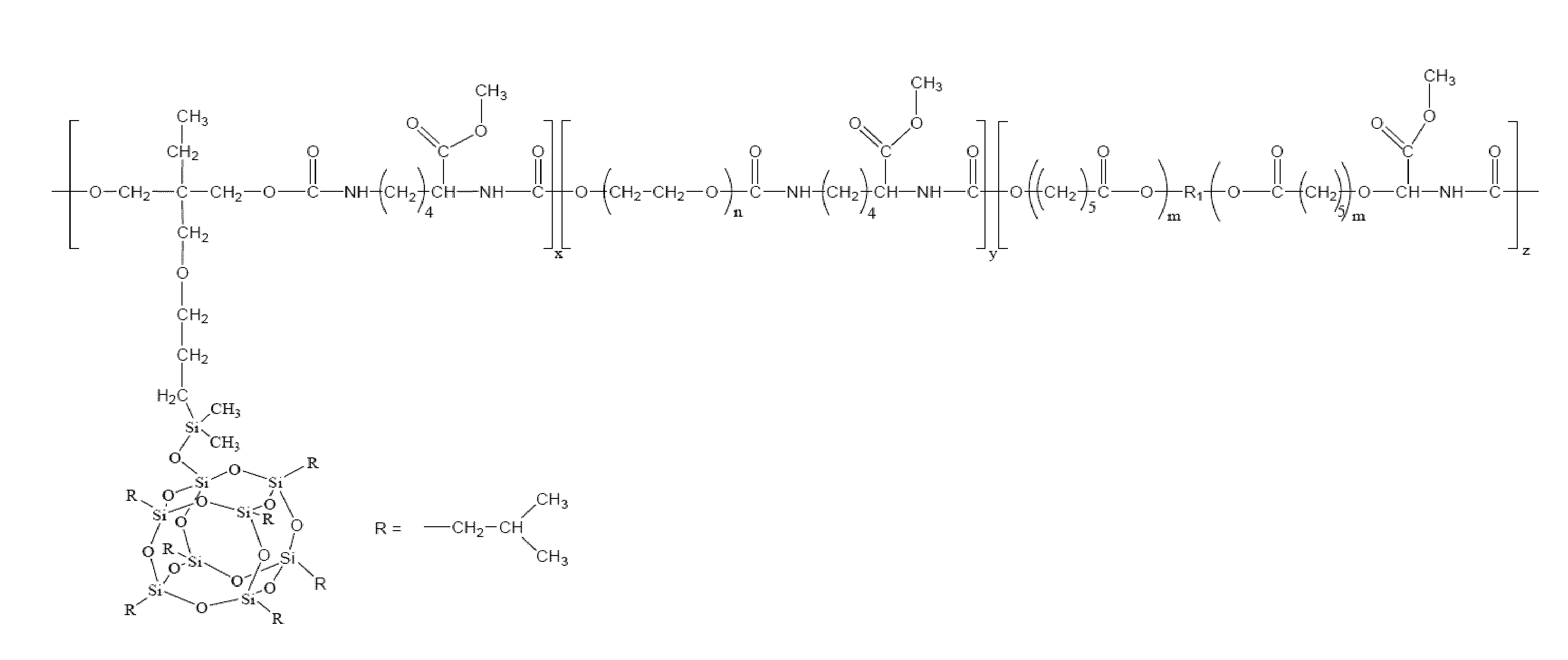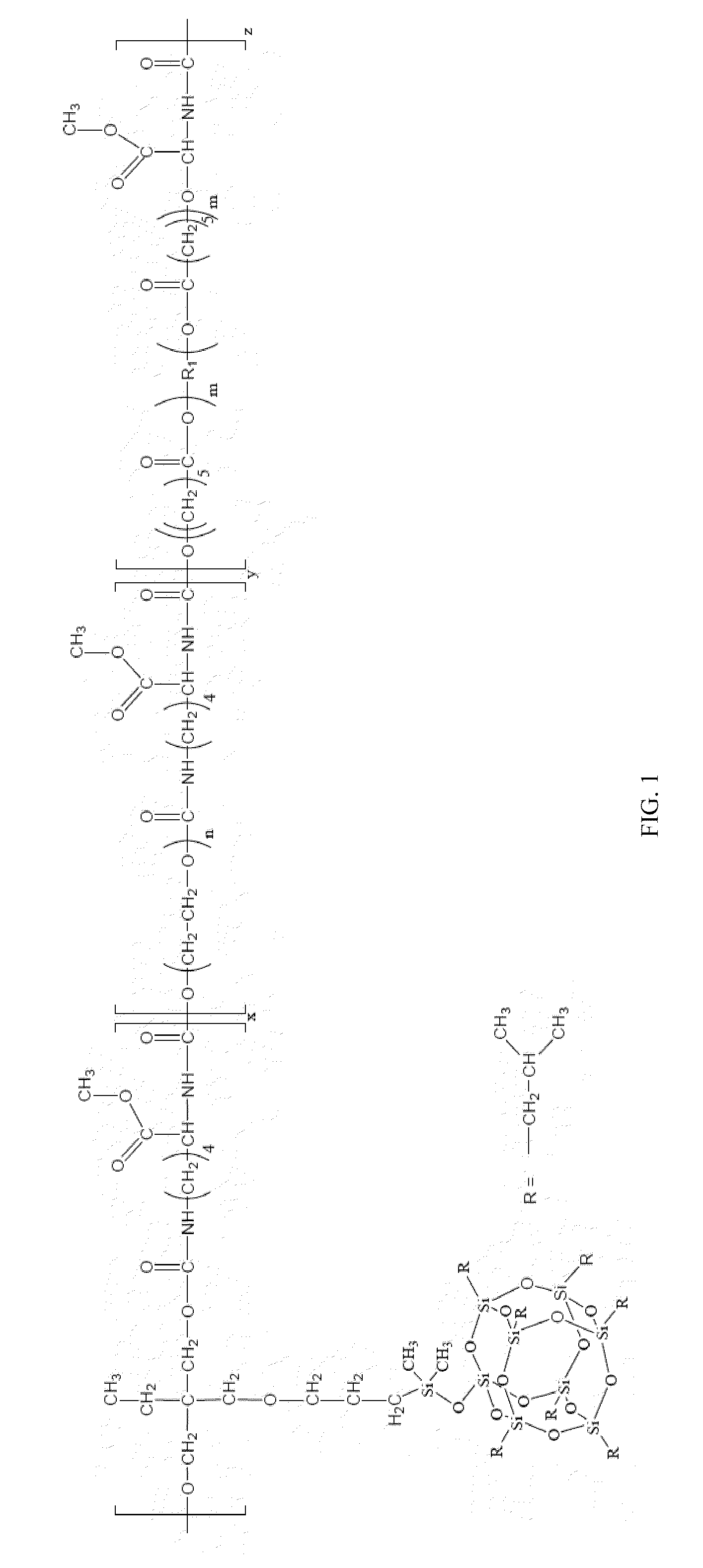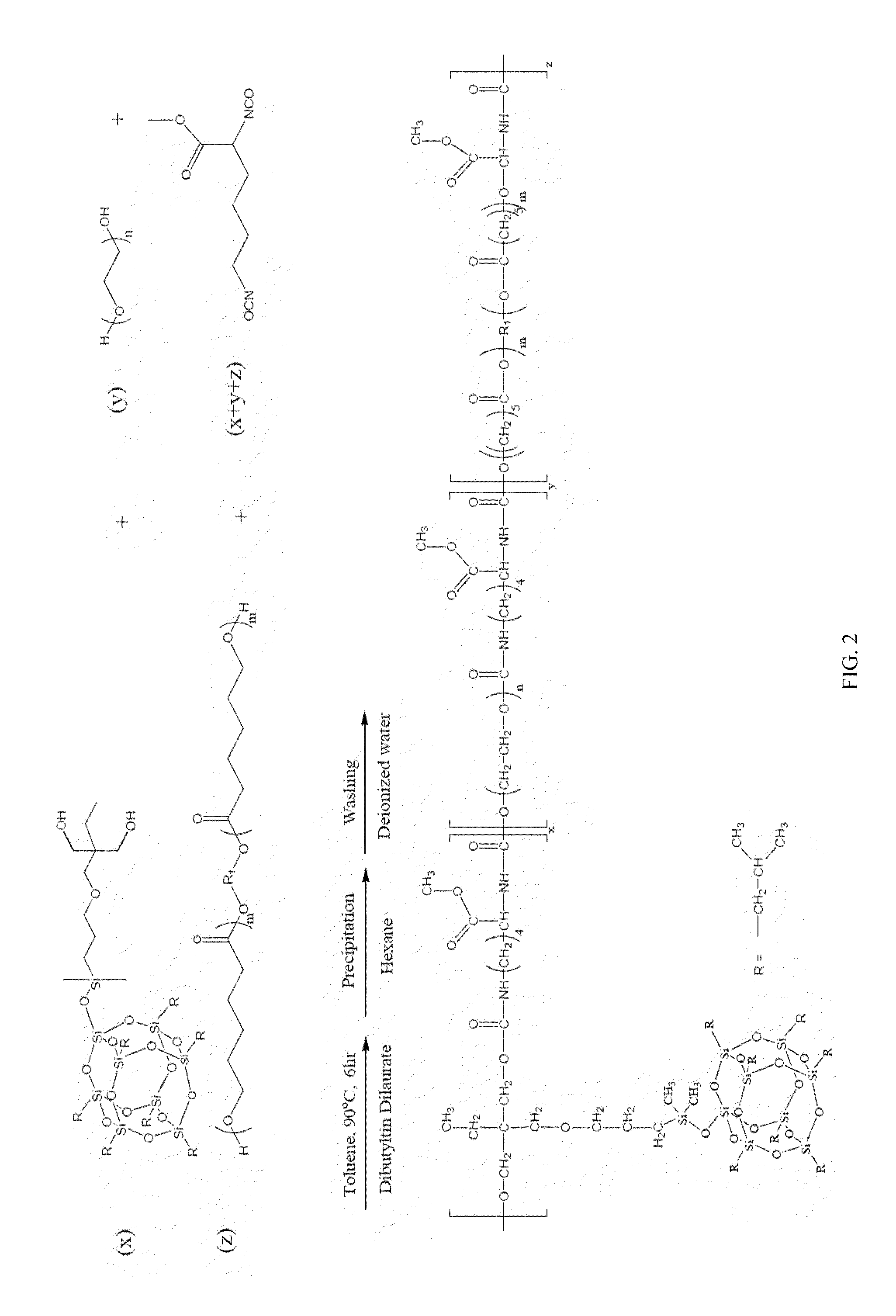Polyhedral oligomeric silsesquioxane polyurethanes
a polyurethane and polyhedron technology, applied in the field of polyhedron oligomeric silsesquioxane polyurethanes, can solve the problems of limiting the range of applications, limiting the compatibility of peg-based polyurethanes with soft tissues, and poor mechanical properties of peg-based polyurethanes, and achieves the effect of inhibiting degradation
- Summary
- Abstract
- Description
- Claims
- Application Information
AI Technical Summary
Benefits of technology
Problems solved by technology
Method used
Image
Examples
examples
[0054]Multi-block thermoplastic polyurethanes were synthesized from PCL-diol, PEG, 2,2,4-trimethyl-1,3-pentane (TMP) POSS diol (R-group=iBu) (hereafter “POSS diol”) (95%, Hybrid Plastics, Inc.®), and lysine methyl-ester diisocyanate (LDI), using a one-step technique, as shown in FIG. 2. First, PEG (1 k and 10 kg / mol, Fluka®, Inc.) was purified by preparing a THF solution, precipitated into n-hexane several times, and then filtered. These steps were repeated several times. The purified powder was then dried in a vacuum oven at room temperature overnight. LDI (Kyowa Hakko Chemical Co., Ltd.) was purified by vacuum distillation at an oil bath temperature of 180° C. PCL-diol (1.25 kg / mol, Sigma-Aldrich®, Inc.) and POSS diol were used without further purification. In a 100 ml three-neck flask, POSS-diol, PCL diol and PEG were dissolved in toluene (Fisher®, ACS Certified), which had been dried with the aid of calcium hydride (CaH2, Aldrich). Under the protection of a nitrogen purge, the f...
PUM
| Property | Measurement | Unit |
|---|---|---|
| size | aaaaa | aaaaa |
| molecular weight polydispersities | aaaaa | aaaaa |
| Tg | aaaaa | aaaaa |
Abstract
Description
Claims
Application Information
 Login to View More
Login to View More - R&D
- Intellectual Property
- Life Sciences
- Materials
- Tech Scout
- Unparalleled Data Quality
- Higher Quality Content
- 60% Fewer Hallucinations
Browse by: Latest US Patents, China's latest patents, Technical Efficacy Thesaurus, Application Domain, Technology Topic, Popular Technical Reports.
© 2025 PatSnap. All rights reserved.Legal|Privacy policy|Modern Slavery Act Transparency Statement|Sitemap|About US| Contact US: help@patsnap.com



